Turns out, how you store plywood can brand a big impact. Learn more here.
 Family Handyman
Family Handyman
While working on a project aslope master furniture maker Bruce Keifer, we were puzzled past the little belted-together blocks that were stuck between pieces of plywood aslope Bruce's lumber rack. So, being naturally curious, nosotros asked most them and received some eye-opening instruction.
"Plywood or other sheet stock can warp, particularly if information technology's stored surface to surface," Bruce said. "The blocks carve up the sheets and so air can broadcast on both sides. Flat sheets from the lumberyard stay flat this mode, no affair how long they're stored."
The leather is flexible, so yous can utilize them on any combination of thicknesses of sheet goods.
 Family Handyman
Family Handyman
How to Brand Plywood Spacers
The blocks are a snap to make from flake wood and leather.
Step One:
Cut two 1-in.-wide strips of leather (or vinyl or heavy fabric).
Step Two:
Infinite and screw two-in. x iii/4-in. x i-in. blocks forth the strap.
"The air space also keeps them a lot easier to grab when yous need to pull one out," said Bruce. "For total sheets, employ iii sets of spacers, one at each end and 1 in the eye."
Carrying plywood is incredibly simple with a simple length of rope.
Adjacent, check out our ultimate guide to plywood core options:
 Family Handyman
Family Handyman
Veneer Core
Veneer core is made upwardly of many layers of hardwood bonded together. The layers are assembled with alternate grain direction, called cross banding. This makes a potent, rigid, lightweight canvass with splendid screw property capability. Because of these qualities, veneer core is my first pick in most cases. Check out these xvi Tips to Get the Best Plywood for Your Cadet.
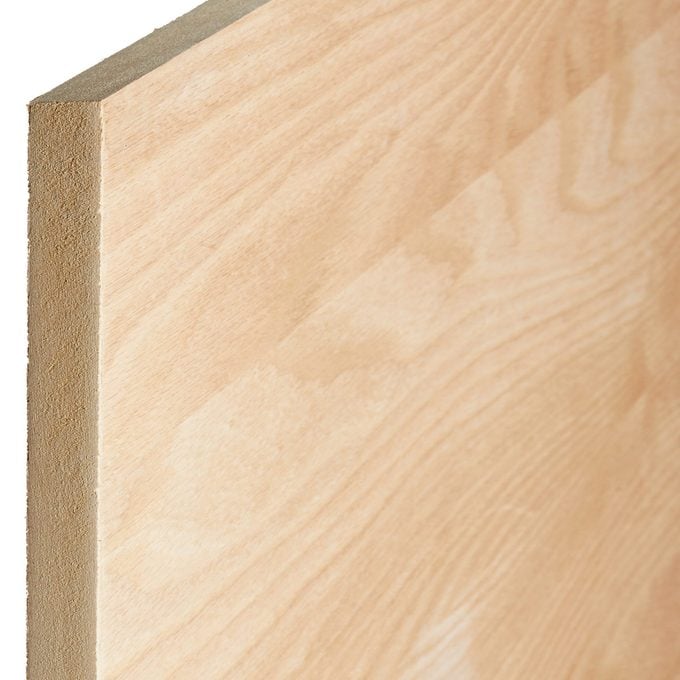 Family unit Handyman
Family unit Handyman
MDF Cadre
MDF cadre has a few advantages over veneer cadre. The thickness is more consistent, and MDF gives a shine, fifty-fifty surface for the face veneer. It's as well more stable and it's typically flatter. Yet, MDF core isn't as strong every bit veneer core, it doesn't agree fasteners besides and information technology's heavy. But if I'grand making one-piece doors, I'll choose MDF core every time because of its flatness and stability. Nosotros accept the mystery out of the plywood grading system and bear witness yous what you will get in each class. The higher the grade the better quality you should expect.
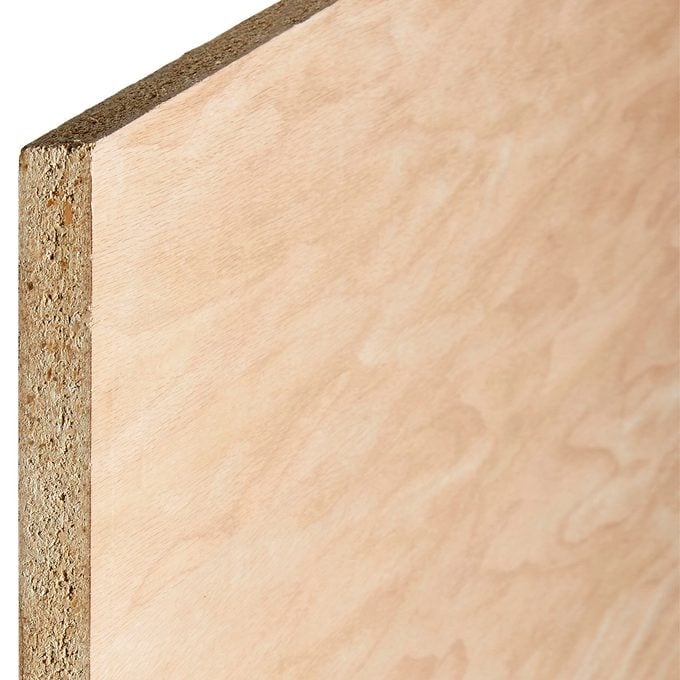 Family Handyman
Family Handyman
Particleboard Core
Particleboard Core is the to the lowest degree expensive option. Similar MDF core, information technology's flat and stable with consistent thickness. But particleboard core options are a bit worse in the screw holding category. Also, information technology'due south a special-order product, at to the lowest degree from my lumberyard, whereas MDF core is readily bachelor.
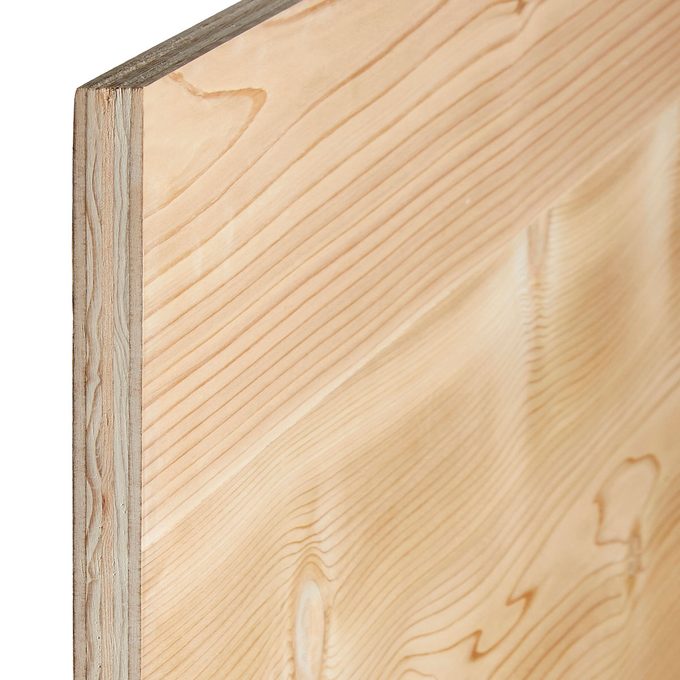 Family Handyman
Family Handyman
Combination Core
Combination Core weds the best attributes of MDF core and veneer cadre. The center cores are cross banded hardwood, providing forcefulness, light weight and screw-holding capability. The outer cores are MDF, giving a flat, uniform surface for the face veneers. Nonetheless, combination core is a compromise: Information technology doesn't accept the spiral-holding capability and rigidity of veneer core, or the flatness and stability of MDF core. The Family Handyman DIY practiced, Spike Carlsen, will prove yous how to cutting construction grade plywood and finish grade plywood with a circular saw.
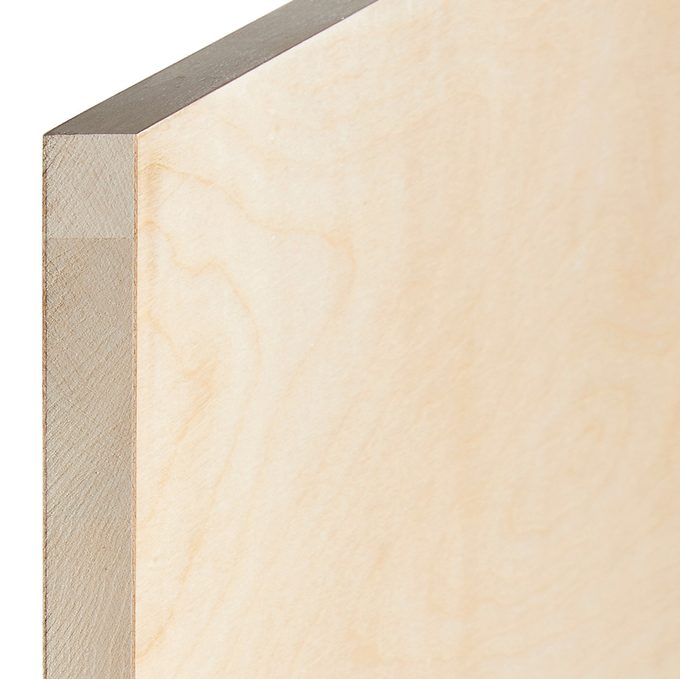 Family Handyman
Family Handyman
Lumber Cadre
Lumber Cadre consists of edge-glued strips of wood, unremarkably basswood. On both sides of the core, there'south a cantankerous banded veneer, and then the face up veneer. Like veneer core, information technology has excellent screw holding capability, strength and rigidity. Only information technology'southward considerably more than expensive and harder to observe than veneer core, so I almost never utilize information technology. All the same, it's a good selection for long shelves.
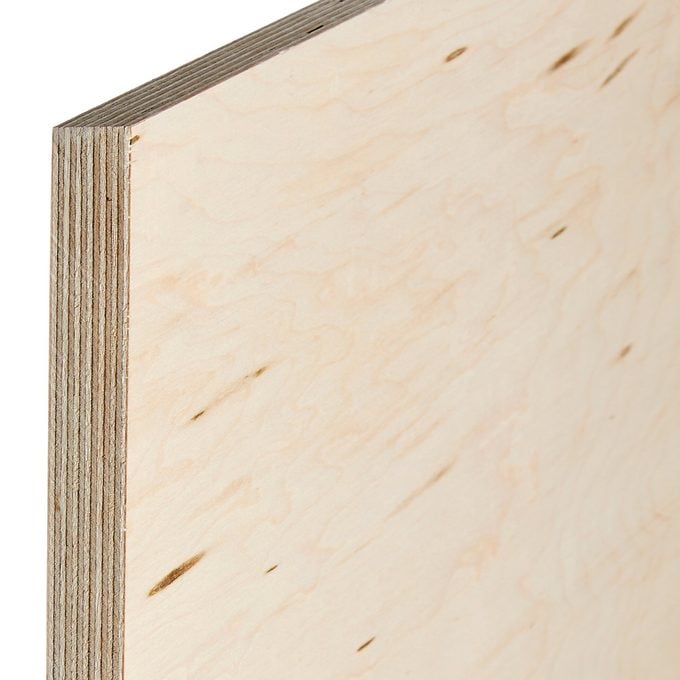 Family Handyman
Family Handyman
Baltic Birch and Appleply
Baltic Birch and Appleply are acme-notch veneer core plywoods, which yous'll only observe at a lumberyard. Their 1/16-in.-thick core options veneer offer meliorate stability than typical plywood with 1/8-in.-thick core veneers. The raw edge is attractive when finished and often used equally a design element. Baltic birch or ApplePly is my first choice for drawers and store jigs. ApplePly is available in thicknesses from 1/four in. to 1-1/2 in., and in many confront veneer species. Check out our guide to Plywood Veneer: This is Why the Cut Matters.
ⓘ








0 Response to "The Best Hack For Storing Plywood"
Post a Comment